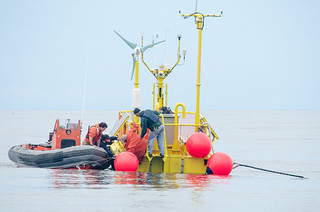 This week’s closure of Crater Lake to divers follows National Parks Service participation in a recent Sea Grant-sponsored workshop on the legal and regulatory challenges to keeping two significant invasive species out of waterways in western states.
This week’s closure of Crater Lake to divers follows National Parks Service participation in a recent Sea Grant-sponsored workshop on the legal and regulatory challenges to keeping two significant invasive species out of waterways in western states.
The NPS announced the immediate, temporary closure on Wednesday, saying it needed time to establish protocols to minimize the risk of contaminating the pristine lake with invasive species. The service anticipates that the protocols will be in place before the beginning of the 2013 season, and will require divers to take precautionary measures before entering the lake.
The 1,943-foot-deep Crater Lake, the centerpiece of a 249-square-mile national park in the southern Oregon Cascades, is considered the deepest lake in the United States, and the ninth deepest lake in the world. Its relative isolation, along with rigorous management of the surrounding Crater Lake National Park watershed, has helped make it one of the cleanest, as well.
Of immediate concern to the park – and to representatives of state and federal agencies and Western states’ attorneys general who attended last week’s workshop in Phoenix, AZ – are highly invasive zebra and quagga mussels, already a plague in many US waters and just beginning to show up in the West.
The fast growing mussels can rapidly colonize on boats and other recreational water gear, and can be easily spread from one waterway to another. Once established, they can foul docks, piers, water intakes and power systems, and – of more direct concern in Crater Lake – alter entire ecosystems by outfeeding and outbreeding native species.
While the mature mussels are easy to see and – with some effort – remove, their larvae start life at a microscopic size, making them difficult to detect and destroy.
The Phoenix meeting, convened by Oregon Sea Grant, the National Sea Grant Law Center and the US Fish and Wildlife Service, engaged state, federal and local agencies – including representatives of the attorneys general of all 15 Western states – in a discussion of legal and regulatory frameworks that might help keep the invaders out of Western waters where they have yet to appear – or have just begun to show up. In addition, participants talked about how they might educate the recreational public about the problem, and protocols for decontaminating gear when it’s hauled out of one body of water and transported to another.
Learn more:
- NPS closure announcement
- Story about the closure from The Oregonian
- Oregon Sea Grant’s Aquatic Invasive Species pages. Presentations and other material from the recent workshop will be posted here soon.




